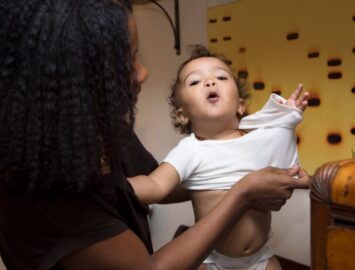Last Updated on November 25, 2024 by Michelle Wan
For families navigating the challenges of birth injuries in their newborn child, home care plays a crucial role in providing a safe, nurturing environment for children with unique medical and developmental needs. Conditions like cerebral palsy, Erb’s palsy, or hypoxic-ischemic encephalopathy (HIE) often require specialized care, adaptive routines, and a deep understanding of the child’s condition to ensure their well-being and development.
In this article, we’ll explore the key components of home care for birth injuries, practical tips for caregivers, and resources to help families manage the financial and emotional demands of long-term caregiving.
Why Home Care is Essential
Birth injuries can lead to physical, cognitive, and sensory impairments that require ongoing support. Home care provides:
- Consistency: A stable, familiar environment helps children feel secure and supports their overall development.
- Customization: Home care routines can be tailored to meet the specific medical and therapeutic needs of each child.
- Family Bonding: Care provided at home strengthens family connections and creates opportunities for shared learning and growth.
Key Components of Home Care for Birth Injuries
Medical Management
Daily Monitoring: Track symptoms, medication schedules, and therapy progress to ensure the child’s condition is stable.

Assistive Equipment: Incorporate devices such as wheelchairs, feeding tubes, or communication aids into daily routines.
Emergency Preparedness: Develop a plan for managing medical emergencies, including seizures or respiratory issues, and keep emergency contacts accessible.
Therapeutic Support
Physical Therapy: Include exercises to improve strength and mobility. Your therapist may recommend tools like therapy balls or resistance bands for at-home use.
Speech Therapy: Practice communication skills with AAC devices or speech exercises as directed by your child’s therapist.
Occupational Therapy: Use adaptive strategies and tools to help your child perform daily tasks, such as eating or dressing, with greater independence.
Educational Activities
Interactive Learning: Incorporate games and activities that build cognitive skills and encourage curiosity.
Adapted Education: Work with educators to create a tailored learning plan that complements at-home efforts, such as IEP goals or additional tutoring.

Emotional and Social Support
Emotional Encouragement: Celebrate your child’s achievements, no matter how small, to build their confidence.
Peer Interaction: Facilitate social opportunities through playgroups, community events, or virtual connections with other children who have similar challenges.
Home Modifications
Accessibility: Install ramps, grab bars, or stair lifts to create a safe and functional environment.
Therapy Spaces: Dedicate areas in your home for therapeutic activities or sensory play to encourage regular practice and engagement.
Practical Tips for Caregivers
Establish a Routine
Consistent routines reduce anxiety and provide structure for both the child and caregivers. Incorporate medical care, therapy sessions, and family time into a predictable schedule.
Learn and Adapt

Educate yourself about your child’s condition and remain flexible to adapt care plans as their needs evolve. Work closely with medical professionals and therapists to stay informed.
Involve the Whole Family
Encourage siblings and other family members to participate in caregiving. This not only strengthens family bonds but also reduces the burden on a single caregiver.
Practice Self-Care
Caring for a child with birth injuries can be emotionally and physically demanding. Take time for yourself to recharge through hobbies, exercise, or connecting with support groups.
Financial Resources for Home Care
Home care can be costly, but several resources are available to help families manage expenses:
Government Programs
Medicaid: Provides funding for in-home care, assistive devices, and therapy services for eligible families.
Supplemental Security Income (SSI): Offers financial assistance for children with disabilities.
Nonprofit Organizations
United Cerebral Palsy (UCP) and the March of Dimes provide grants, resources, and support for families managing birth injuries.
Birth Injury Compensation

Families whose child’s condition resulted from medical negligence may be eligible for compensation to cover home care expenses.
Special Needs Trusts
A trust can ensure funds are available for long-term care while preserving eligibility for government benefits.
Emotional Support for Families
Caring for a child with birth injuries can be emotionally taxing. Families often face feelings of isolation, stress, or burnout. Support groups and counseling can provide valuable outlets for sharing experiences and receiving encouragement from others who understand your journey.
How Thomas & Wan LLP Supports Families
At Thomas & Wan LLP, we recognize the immense dedication and effort required to care for a child with birth injuries. Our team is committed to helping families secure the resources they need to provide the best possible care for their child. Whether through legal advocacy or connecting you with helpful resources, we’re here to support your family every step of the way.
Home care for birth injuries is a deeply personal and transformative journey. By creating a nurturing environment tailored to your child’s needs, you can help them overcome challenges and thrive. While the path may be demanding, there are resources and support systems available to ease the burden and empower your family.
If your child’s birth injury was caused by medical negligence, Thomas & Wan LLP can help you pursue justice and the compensation necessary to support your child’s care.
Contact us today for a free consultation to discuss your options and start securing the resources your family deserves.




